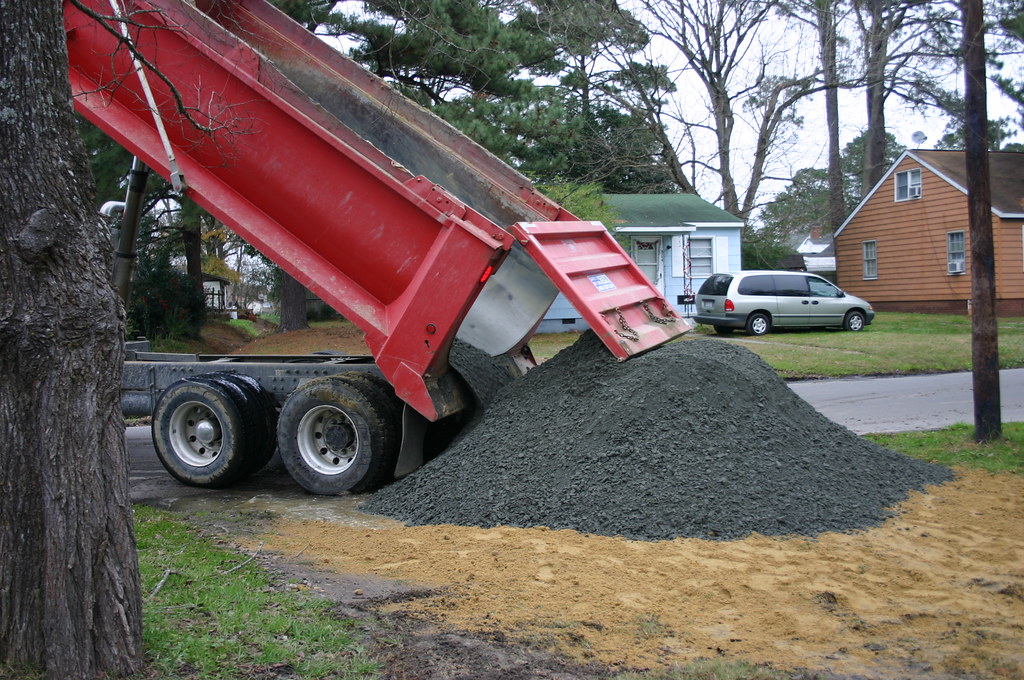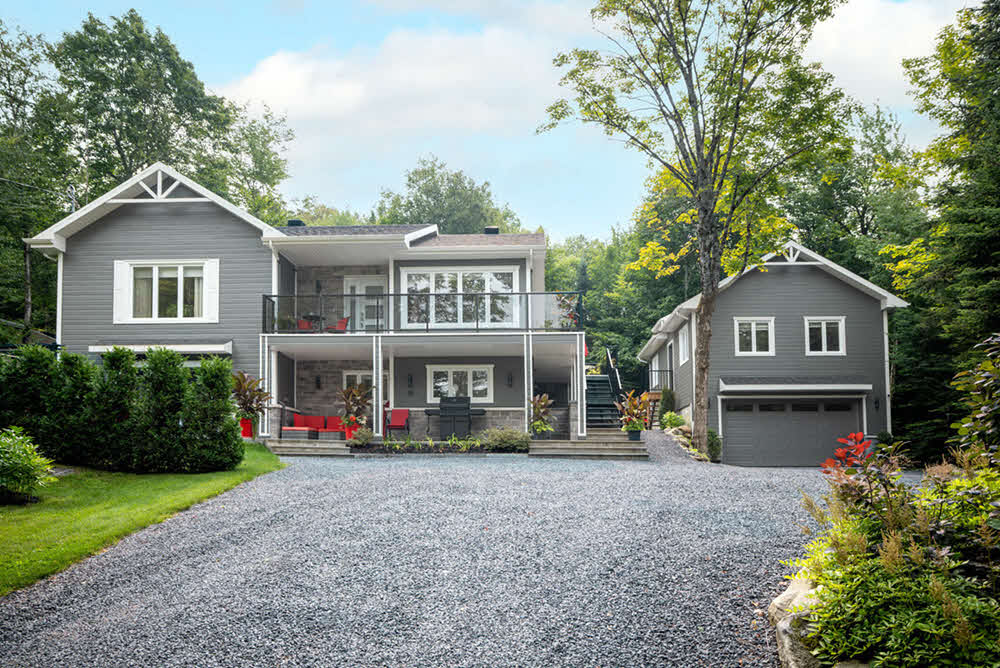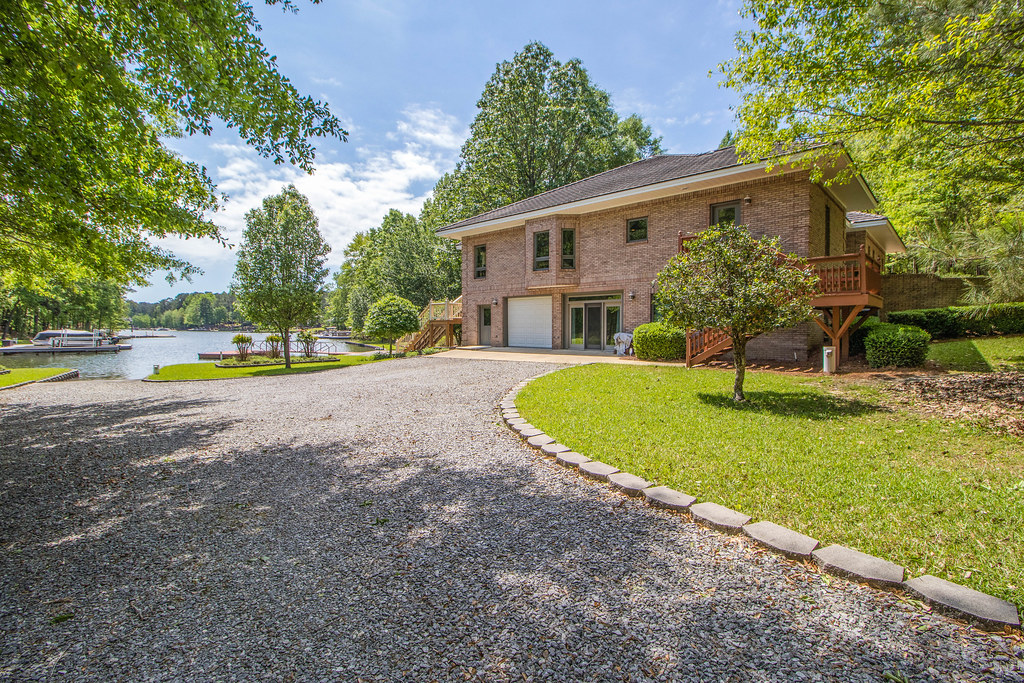Gravel Drivewaysin Madison Heights MI
Expert Gravel Driveway Installation for Lasting Durability
We Are Locally Owned & Operated For Over 37 Years
Contact Us Today!
We Serve Businesses In And Around The Following Cities:
About Gravel Driveways
Introduction to Gravel Driveways
Gravel driveways have existed for generations and continue to be used extensively in both rural and urban settings. This article delves into the significance and benefits of gravel driveways, primarily centered around commercial properties in Madison Heights. With a focus on the process from start to finish, it provides comprehensive insights into various aspects such as the cost, available options, maintenance, and real-world applications of using gravel driveways.
The Process of Installing a Gravel Driveway
To better understand what exactly goes into a gravel driveway, let’s examine the installation process. Primarily, it involves steps such as site excavation, installing a solid foundation or base, and then applying layers of specific types of gravel. If you’re considering laying a gravel driveway, experienced firms such as D&J Contracting can provide concrete assistance.
The first step is ground leveling, followed by the selection of the right type of gravel for the foundation – usually crushed stone. After the foundation, the next layer to be added is usually crushed gravel, varying in size, which helps in creating a stable base.
The final step depends on personal aesthetic preference. Some may choose pea gravel, distinct for its rounded shape, while others may opt for grey driveway gravel or even a black gravel driveway for an elegantly modern finish. The costs involved may also play a factor in these decisions.
Cost of Gravel Driveway
Gravel driveway cost can vary based on factors like gravel quality, driveway size, required groundwork, and the professional help hired. Doing thorough research is advised to ensure you get the right price for what you’re looking for. Companies like D&J Contracting can provide fair estimates for gravel driveway installations and other related services.
Gravel Driveway Design Options
When it comes to gravel driveways, one is not compelled to stick to traditional designs. There are many options to explore, such as an edged gravel driveway that combines gravel with sharp edging further to enhance the aesthetics, or an asphalt gravel driveway for a sturdier finish.
One could also consider a beautiful combination of gravel and paved driveway which offers an extraordinary visual appeal. Such custom designs require experienced gravel driveway contractors to execute correctly, hence the reason for having local, trusted entities like D&J Contracting.
Benefits of Gravel Driveway
From easy installation to cost-efficiency, aesthetic appeal, and adaptability, a gravel driveway offers numerous advantages. One key benefit is the natural drainage it provides, preventing water pooling and prolonging the driveway’s lifespan. Moreover, the wide availability and variety of gravel, from fine gravel driveway options to coarser alternatives, allows customization at every level.
Maintaining a Gravel Driveway
Gravel driveways require periodic maintenance. Actions such as regrading, refilling the lost gravel, fixing potholes in a gravel driveway or even executing a full gravel driveway resurfacing might be necessary over time. Regular grading and gravel replenishment can prevent the surface from becoming uneven.
But you don’t have to do all this work by yourself. Firms like D&J Contracting provide affordable and efficient gravel driveway services, which can include repairing a gravel driveway or even installing a new one per your specifications.
Real-World Applications
Gravel driveways are common in various settings, including high-end homes, farms, and more professional commercial properties due to their cost-effectiveness and versatility. Schools, restaurants, retail centers, and even churches in Madison Heights can be seen taking advantage of gravel driveways. For businesses and organizations, gravel driveways provide a practical, economical, and visually appealing solution for their properties.
Gravel driveway contractors, like the seasoned team at D&J Contracting, work closely with property owners to achieve the desired look and feel while ensuring quality and longevity.
Having covered the process, costs, benefits, maintenance, and real-world applications of gravel driveways, we hope this guide serves as a comprehensive resource for property owners and landscapers alike.
Experience the quality and benefits that a gravel driveway brings. Whether planning a new gravel driveway or repairing an existing one, D&J Contracting is always available to transform your space, offering professional services at competitive prices. Reimagine your commercial driveway today.
Gravel Driveways Gallery


Call Us Today to receive your Free Quote for
Gravel Driveway in Madison Heights
Serving: Madison Heights, Michigan

About Madison Heights, Michigan
Originally part of Royal Oak Township, Madison Heights incorporated as a city by popular vote on January 17, 1955, and chartered on December 6 of that same year, becoming the tenth city government in southern Oakland County. At that time, the 7.2 square miles (18.6 km) city was one of the largest suburban communities in the Metro Detroit area. The first city hall was at 26305 John R Road, the former township offices. On April 5, 1963, a new municipal building was dedicated which is on the present location at 300 West Thirteen Mile Road. The city lies in the Interstate 696 (I-696) and I-75 corridor and is served by two primary school districts, Lamphere and Madison, as well as a full-service municipal government.
According to the United States Census Bureau, the city has a total area of 7.09 square miles (18.36 km), all land.
Although 91% of the buildings in Madison Heights are single-family homes or condominiums (approximately 9,800 residential property owners), 60% of the tax base is fueled by light industrial or commercial property. The city has 15 voting precincts, totaling more than 21,000 registered voters.
Madison Heights shares borders with Troy to the north, Royal Oak to the west, Hazel Park to the south, and Warren to the east. The eastern border of Madison Heights (Dequindre Road) is also the border between Oakland and Macomb counties.
There are more than 112 miles (180 km) of road within Madison Heights, of which the city maintains 105 miles (169 km), 95 miles (153 km) for snow removal, sweeping, and patching. Interstate 75 passes north to south on the west side of the city, and Interstate 696 is the major feature of its southern border. The junction of these two highways is shared with Royal Oak and Hazel Park on the southwest corner of Madison Heights.
| Census | Pop. | Note | %± |
|---|---|---|---|
| 1960 | 33,343 | — | |
| 1970 | 38,599 | 15.8% | |
| 1980 | 35,375 | −8.4% | |
| 1990 | 31,296 | −11.5% | |
| 2000 | 31,101 | −0.6% | |
| 2010 | 29,694 | −4.5% | |
| 2020 | 28,468 | −4.1% | |
| U.S. Decennial Census | |||
As of the 2020 United States census of 2020, there were 28,468 people and 13,487 households in the city. The population per square mile is 4,017.5.
The racial makeup of the city was 80.4% White, 7.8% African American, 0.2% Native American, 7.2% Asian, 0.1% Pacific Islander, 3.6% from two or more races. Hispanic or Latino residents of any race were 2.0% of the population.
There were 13,487 households, of which 14.7% spoke a language other than English at home. People under 65 years of age with a disability accounted for 11.1% of the city’s population, and 11.7% of the city’s population was living below the federal poverty line. Households without a broadband internet subscriptions made up 11.9% of the community.
16% of residents were under the age of 18; and 16.3% were 65 years of age or older. The gender makeup of the city was 49.4% male and 50.6% female.
As of the census of 2010, there were 29,694 people, 12,712 households, and 7,543 families residing in the city. The population density was 4,188.2 inhabitants per square mile (1,617.1/km). There were 13,685 housing units at an average density of 1,930.2 per square mile (745.3/km). The racial makeup of the city was 83.9% White, 6.4% African American, 0.5% Native American, 5.8% Asian, 0.1% Pacific Islander, 0.7% from other races, and 2.7% from two or more races. Hispanic or Latino residents of any race were 2.5% of the population.
There were 12,712 households, of which 27.5% had children under the age of 18 living with them, 41.0% were married couples living together, 12.9% had a female householder with no husband present, 5.4% had a male householder with no wife present, and 40.7% were non-families. 34.1% of all households were made up of individuals, and 11.8% had someone living alone who was 65 years of age or older. The average household size was 2.32 and the average family size was 3.02.
The median age in the city was 38.3 years. 20.4% of residents were under the age of 18; 8.7% were between the ages of 18 and 24; 30.4% were from 25 to 44; 26.6% were from 45 to 64; and 13.9% were 65 years of age or older. The gender makeup of the city was 49.1% male and 50.9% female.
As of the 2000 United States census, there were 31,101 people, 13,299 households, and 8,005 families residing in the city. The population density was 4,341.3 inhabitants per square mile (1,676.2/km). There were 13,623 housing units at an average density of 1,901.6 per square mile (734.2/km). The city’s racial makeup was 89.60% White, 1.82% African American, 0.44% Native American, 4.97% Asian, 0.03% Pacific Islander, 0.46% from other races, and 2.68% from two or more races. Hispanic or Latino residents of any race were 1.61% of the population.
There were 13,299 households, of which 26.9% had children under the age of 18 living with them, 45.2% were married couples living together, 10.5% had a female householder with no husband present, and 39.8% were non-families. 33.8% of all households were made up of individuals, and 12.3% had someone living alone who was 65 years of age or older. The average household size was 2.33 and the average family size was 3.02.
In the city, 22.1% of the population was under the age of 18, 8.1% was from 18 to 24, 35.4% from 25 to 44, 20.2% from 45 to 64, and 14.2% was 65 years of age or older. The median age was 36 years. For every 100 females, there were 95.8 males. For every 100 females age 18 and over, there were 92.9 males.
The city’s median household income was $42,326, and the median family income was $51,364. Males had a median income of $41,478 versus $29,345 for females. The city’s per capita income was $21,429. About 7.0% of families and 8.9% of the population were below the poverty line, including 10.8% of those under age 18 and 13.0% of those age 65 or over.
In 2008, 1.9% of the Madison Heights population were of Vietnamese descent. 168 Asian Mart, a 38,000-square-foot (3,500 m) supermarket, is the largest Asian supermarket in southeast Michigan, and one of the largest in the state. The Chinese Cultural Center is in Madison Heights.
The mayor of Madison Heights is Roslyn Grafstein, who was appointed as Mayor in August 2020 to fill a vacant seat.
Madison District Public Schools and Lamphere Public Schools have public schools serving Madison Heights.
Bishop Foley Catholic High School is a private school.
Four Corners Montessori Academy is a public charter school.
Call Us Today to receive your Free Quote for
Gravel Driveway in Madison Heights
Related Services in Madison Heights, Michigan
We Serve Businesses In The Following Zip Codes:
48007, 48015, 48021, 48026, 48035, 48036, 48038, 48042, 48043, 48044, 48045, 48046, 48047, 48048, 48050, 48051, 48066, 48071, 48080, 48081, 48082, 48083, 48084, 48085, 48088, 48089, 48090, 48091, 48092, 48093, 48098, 48099, 48225, 48230, 48236, 48310, 48311, 48312, 48313, 48314, 48315, 48316, 48317, 48318, 48397